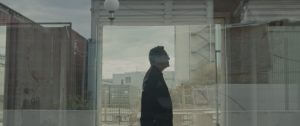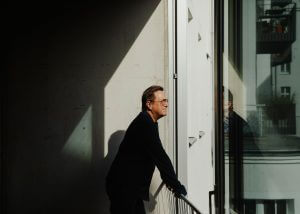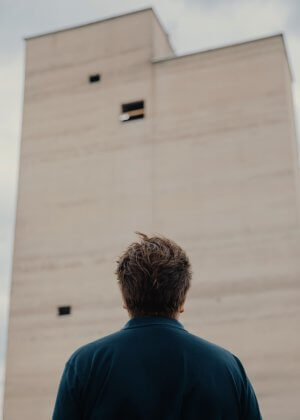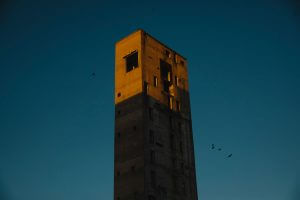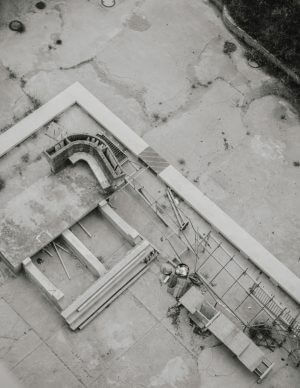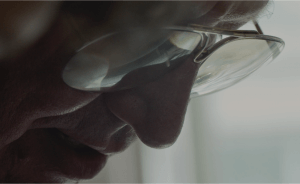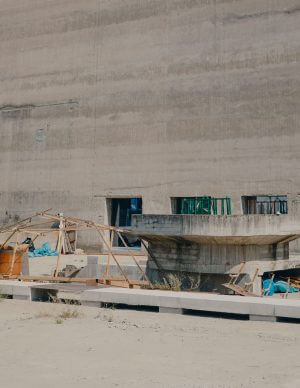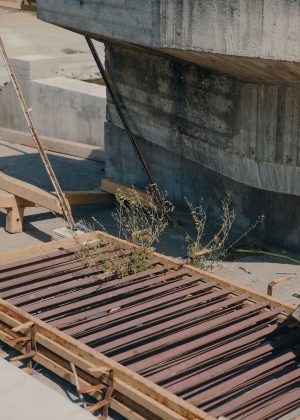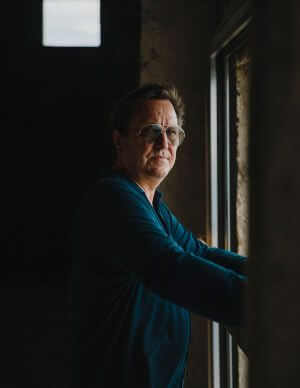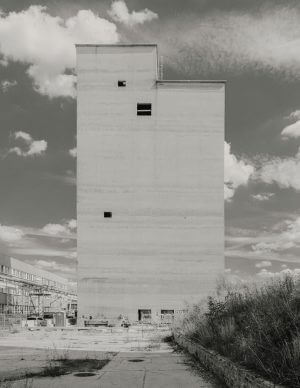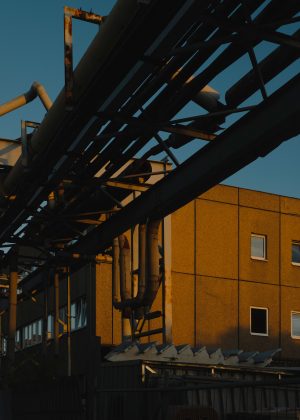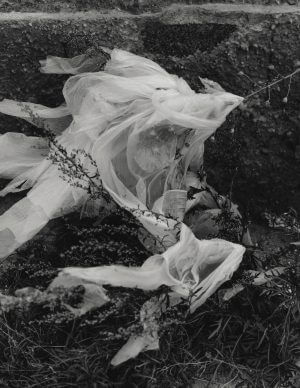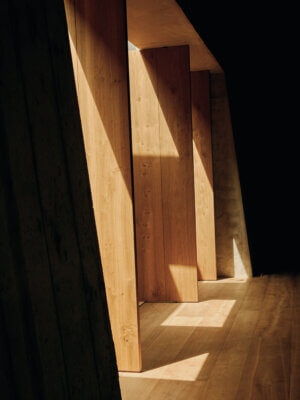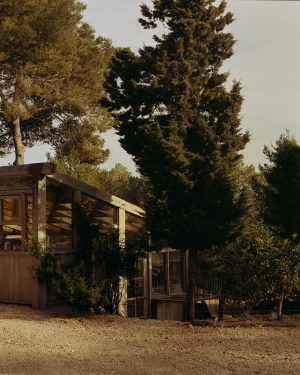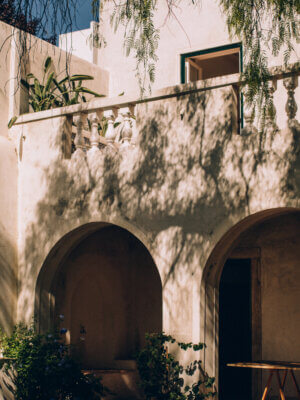A Brandlhuber building doesn’t just introduce new forms; it asks new questions, brings forth new modes of discourse, a philosophy he refers to as “argumenting architecture.”
Now Brandlhuber is applying this philosophy to the raw industrial landscape of eastern Berlin with two ambitious projects that are currently underway. He’s transforming a hulking Soviet-era graphite silo in the Lichtenberg district into a mold-breaking new headquarters for his freshly reshaped practice, Brandlhuber+. And in the nearby Rummelsburg neighborhood, Brandlhuber is one of the key architects designing Flussbad, a creative campus at the intersection of wellbeing, culture and sustainability at the site of the historic Lichtenberg River Baths.
We went behind the scenes on both of these projects in the first installment of our short-film series, “Into the Mind,” which delves deep into the creative process and private world of some of the most fascinating figures of our time.
